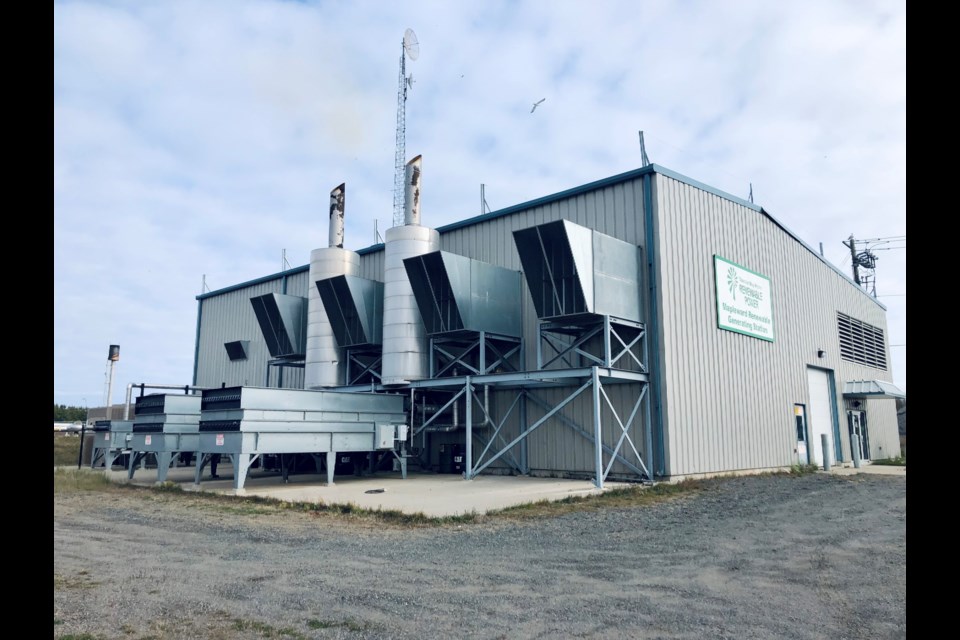THUNDER BAY – The performance of the renewable generating station at the Mapleward landfill remains well below initial expectations, requiring a second injection of $1 million to remain solvent, but the station is still bringing financial and environmental benefits, Synergy North says.
When the plant was opened in 2010, officials projected Thunder Bay Hydro Renewable Power—a subsidiary of Synergy North set up to operate the plant—would "conservatively" net $14 to $15 million over the course of a 20-year contract selling electricity to the provincial grid.
Instead, Synergy North has been forced to inject millions into the project to keep up with payments on a loan from Infrastructure Ontario that covered 75 per cent of the project’s $9.6 million capital cost.
That has also meant the City of Thunder Bay, which holds a more than 90 per cent stake in Synergy North and is the sole shareholder of Thunder Bay Hydro Renewable Power, also has not yet realized any proceeds from an agreement guaranteeing 5 per cent of sales.
The city does generate revenue from selling the gas to Synergy North, however, generating around $60,000 a year.
Synergy North is barred from providing royalty payments to the city until it’s paid off the debt to Infrastructure Ontario, which is expected in 2025.
CEO Tim Wilson acknowledges the station has fallen well short of expectations, with its output “about half of where we’d like to be,” but said it still provides value.
The company turned a small profit last year, he said, after posting an $807,000 loss in 2020, though $653,000 of that was to cover a write-down of the value of the asset.
“What we’re trying to convey for the public is that there’s been good success with the site,” he said. “It’s done a lot for the environment. [The equivalent of] 450,000 tonnes of CO2 emissions have been avoided since inception in 2010, which is a very positive thing for the community.”
“We’re proud to be part of that – otherwise this gas more than likely would have to have been flared off into the atmosphere, or just leaked out naturally from the ground.”
The plant draws methane, a greenhouse gas far more potent than CO2, from around 100 wells installed at the landfill, which pipe the gas to a generating station near the landfill entrance.
The station generates enough electricity to power roughly 1,400 homes a year, Synergy North says, and has prevented over 20,000 tonnes of methane from entering the atmosphere over its lifetime.
At the Synergy North Annual General Meeting held in conjunction with Thunder Bay’s city council, Mayor Bill Mauro questioned if the plant’s benefits still justify its operation.
“Do you have an option to cut bait on this or to mothball the project temporarily?” he asked.
Wilson maintains the project is still viable financially, alongside its environmental benefits. He also expressed confidence that with output rebounding slightly at the plant, this year’s $1 million injection will be the last needed to ensure debt obligations are met.
“In our opinion, that will get us through to ensuring we’re able to clear that debt off, and then we get into a much better financial situation – all things remaining equal, [if] the gas supply stays where it is, we’re in a much better world at that point.”
The coming years could pose further challenges, however. The amount of garbage being sent to landfill had already been declining slowly in recent years, but the introduction of a municipal composting program by 2025, will remove even more organics.
“That is the good stuff that decomposes quite well for use in producing gas,” Wilson acknowledged.
Synergy North is also working with the city to explore opportunities to produce and capture methane gas from the composting initiative, he said.
The generating station’s monthly production peaked just above 2 million kilowatt-hours shortly after the plant opened, in 2011 and 2012.
From 2014 to 2018, that figure hovered around 1 million kWh, but has dipped since, reaching a low of around 750,000 kWh per month early last year. It has since trended back upwards slightly.
The original high expectations were partly because Thunder Bay was among the first Canadian cities to pursue the initiative, Wilson stated, with estimates based largely on experiences in warmer climates.
Condensation buildup in the delivery system from freezing and thawing has blocked the flow of gas during winter.
Whether to extend the plant’s operations beyond the 20-year term of its agreement with the Ontario Power Authority will depend on whether the province chooses to extend contracts and what pricing it offers, Wilson said.
In one sign of its commitment to the project, Synergy North has recently installed some new wells as part of an effort to boost output, Wilson said.
“I would say if things even remain where they’re at right now, we should be fine,” he said. “As it stands today, it’s still a good business to be in.”
